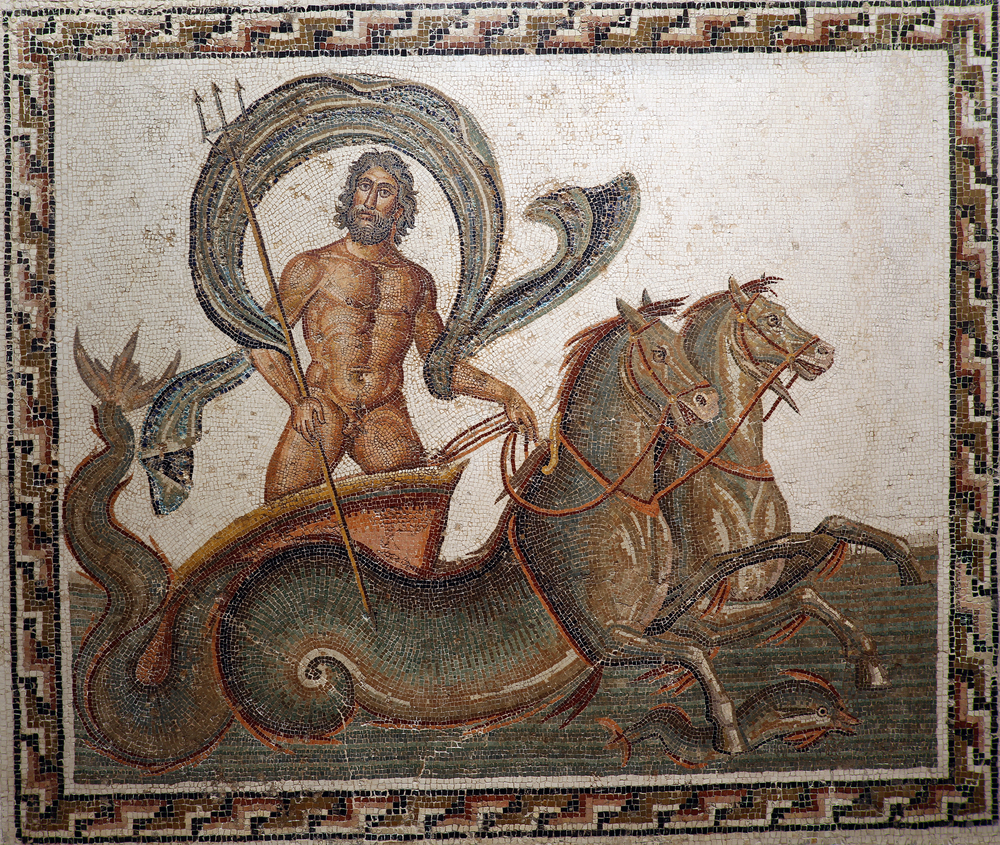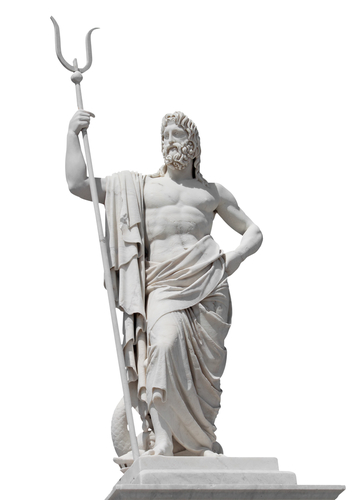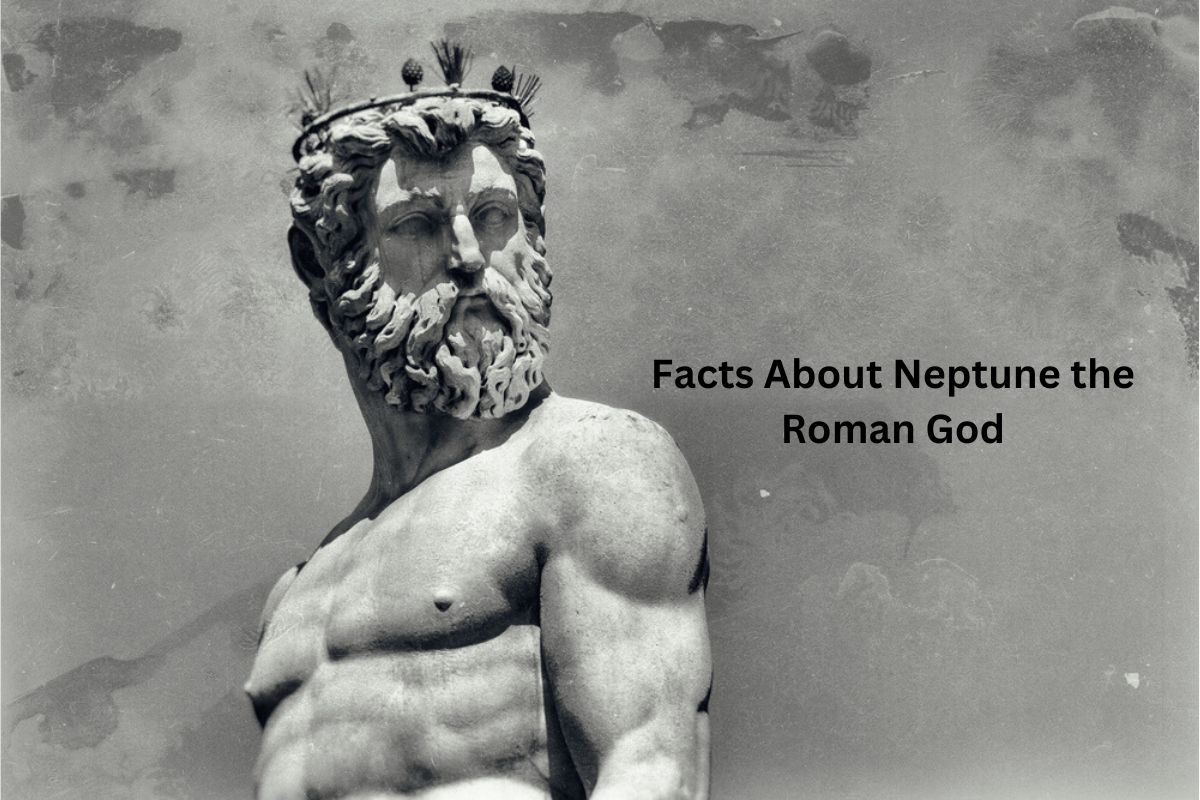Neptune, also known as Poseidon in Greek mythology, was a prominent deity in Roman religion and mythology. As the god of the sea, earthquakes, and horses, he held sway over the vast waters and the unpredictable forces of nature.
Neptune was one of the twelve major gods in the Roman pantheon and a brother to Jupiter and Pluto.
Depicted with his trident, Neptune symbolized his power and control over the sea. Sailors and seafarers revered him, offering prayers for safe voyages and fair winds. The founding of Rome held a connection to Neptune, as he played a role in the creation of a vital water source.
Additionally, Neptune was married to Salacia, associated with calm waters, and had several children, including the notable sea deity Triton. The influence of Neptune extends beyond the sea, as he was also associated with freshwater sources.
Finally, the planet Neptune was named after the god due to its blue color, evoking the sea, solidifying his enduring legacy in both mythology and astronomy.
Roman God Neptune Facts
1. Roman god of the sea, earthquakes, and horses
Neptune, the Roman god, held dominion over various aspects of nature and had specific areas of influence. He was primarily known as the god of the sea, commanding authority over its vast waters, its creatures, and the unpredictable forces it held.
Additionally, Neptune was associated with earthquakes, which were believed to be caused by his movements beneath the Earth’s surface.
Also Read: Facts About Jupiter the Roman God
He was also recognized as the god of horses, symbolizing their strength, grace, and association with the sea, as horses were often used for transportation by sailors and chariots.

2. Brother of Jupiter (Zeus) and Pluto (Hades)
Neptune was part of a powerful divine family. He was one of the three sons of Saturn (Cronus) and Ops (Rhea), making him a sibling to Jupiter (Zeus) and Pluto (Hades).
Also Read: Roman God Mars Facts
Together, these three brothers divided the world into three realms: Jupiter ruled the sky and heavens, Neptune ruled the sea, and Pluto ruled the underworld. As the second-born brother, Neptune held a significant position in the Roman pantheon.
3. Often depicted with a trident, symbolizing his power over the waters
Depictions of Neptune often included iconic symbols and attributes. Artists and sculptors commonly portrayed Neptune with a trident, a three-pronged spear. The trident represented his authority and control over the sea and its mighty waters.
Neptune was often depicted with a regal and powerful presence, sporting a long beard and flowing hair. His appearance reflected his divine status and association with the natural forces he governed.
In some depictions, he was seen riding a chariot pulled by sea creatures or horses, further emphasizing his role as the god of the sea and horses.
4. Capable of causing storms, tidal waves, and earthquakes
Neptune possessed immense power and authority over the sea, making him a deity capable of causing and controlling natural phenomena. He was believed to have the ability to conjure storms, unleash tidal waves, and create earthquakes.
Sailors and seafarers held Neptune in high regard and would make offerings and prayers to him for protection and safe journeys. They sought his favor to appease his potential wrath and to ensure favorable conditions during their voyages.
5. Played a role in the founding of Rome by creating a spring with his trident
The founding of Rome held a special connection to Neptune in Roman mythology. According to legend, when the hero and founder of Rome, Romulus, sought to establish the city, he received divine guidance from Neptune.
The god struck the ground with his trident, causing a spring to gush forth. This spring became a vital water source for the early settlers and served as a symbol of Neptune’s benevolence and protection over the city.
Romans celebrated this event annually with the festival of Neptunalia, expressing gratitude for the abundant waters and the god’s influence.

6. Married to the sea nymph Salacia and had children, including Triton
Neptune was married to Salacia, a sea nymph and goddess of calm and peaceful waters. Salacia personified the gentler aspects of the sea, contrasting with Neptune’s more tempestuous nature. Together, they represented the varying moods and characteristics of the ocean.
Their union produced several offspring, including Triton, who was often depicted as a merman or a sea creature with the upper body of a human and the tail of a fish. Triton, associated with sea heraldry, would often accompany his father and was considered a minor sea deity in his own right.
7. Sailors prayed to him for safe voyages and fair winds
Sailors regarded Neptune as a patron and protector of seafaring endeavors. They would offer prayers and sacrifices to him, seeking his favor for safe voyages and favorable weather conditions.
Temples dedicated to Neptune were constructed near ports and harbors, serving as places of worship where sailors could pay homage and seek divine assistance before setting sail.
These sacred spaces reinforced the belief that Neptune held the power to calm or unleash storms at sea, making him a vital figure in the lives of those who relied on maritime trade and exploration.
8. Associated with freshwater sources such as rivers, lakes, and springs
In addition to his association with the sea, Neptune was also connected to freshwater sources such as rivers, lakes, and springs.
It was believed that he had the ability to create new water sources by striking the ground with his trident, similar to the myth of his role in the founding of Rome.
This association expanded Neptune’s influence beyond the realm of the sea and emphasized his connection to the overall domain of water, making him a deity who held sway over various aquatic environments.
9. Could be both peaceful and wrathful, depending on the situation
Neptune possessed a dual nature, embodying both peaceful and wrathful aspects. While sailors sought his protection and blessings, they also feared his potential anger and retribution if they offended him or disrupted the natural order of the seas.
Neptune’s wrath could manifest in the form of fierce storms, shipwrecks, or unpredictable and treacherous waters. Sailors recognized the need to navigate with respect and caution to avoid invoking his wrath and to maintain harmony with the forces under his control.
10. The planet Neptune was named after him
The planet Neptune, discovered in 1846, was named after the Roman god due to its blue color reminiscent of the sea.
Astronomer Urbain Le Verrier proposed the name, honoring the god who ruled over the vastness of the oceans. Neptune is the eighth and farthest known planet from the Sun in our solar system.
Naming the planet after Neptune further perpetuates the influence and legacy of the Roman god, connecting him not only to mythological beliefs but also to our understanding of the vastness of space.
